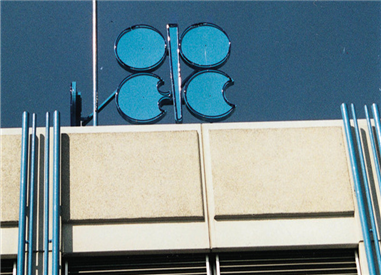



Reductions in supply and demand boost are prompting confidence ahead of this week’s meeting about further production cuts

A RESURGENCE in demand and disciplined reduction in supply mean that a rebalance in the oil market is edging closer, according to the Organisation of Petroleum Exporting Countries secretary general Mohammed Barkindo.
Mr Barkindo said oil markets could have suffered a total collapse if Opec nations and their partners had not agreed to cut supply.
In April, the so-called Opec-plus countries — the oil alliance led by Saudi Arabia and Russia — agreed to cut production by 9.7m barrels per day for May and June. They subsequently extended that to July.
The International Energy Agency reported that Saudi Arabia reduced its June supply by 1m bpd more than it had committed to.
From August, the mandated production cuts among Opec-plus countries will fall to 7.7m bpd.
“According to our estimates, inventory levels could have potentially grown to a staggering 1.3bn barrels above a five-year average,” Mr Barkindo said in a webinar this week.
The alliance members will holding a meeting on July 15 to discuss proposals on further production cuts.
Mr Barkindo said the Opec-plus cuts, as well as those by other producers globally, in combination with demand resurgence seen due to the gradual reopening of economies and societies around the world, are helping the market.
“These supply and demand trends are helping bring us step by step closer to achieving a balanced market and have ushered in newfound confidence in the industry,” he said.
The comments by Mr Barkindo will bode well for tanker companies that are currently experiencing a reduction in tonne mile demand. Supply had been placed under curbs and — following a long period of oversupply until April — inventories had built up and led to large amounts of demand for floating storage. This floating storage is now depleting as economies around the world start consuming oil again.
Despite a massive decline from the rare levels seen in March and April, rates for very large crude carriers are holding at above $30,000 for Middle East to Asia voyages in what is traditionally the weakest quarter of the year.
Average daily rates for suezmax tankers are at just over $10,000 and are at $3,603 for aframaxes, according to data from the Baltic Exchange.
While looser supply restrictions may help the tanker market, owners will also have to contend with the build-up in floating storage owing to physical restrictions on land and trader bets on oil price contango earlier this year.
There was about 301m barrels of crude oil and clean products on tankers that were considered to be in storage by the end of last week, Lloyd’s List Intelligence data showed.
Opec’s share of global oil production fell from 41.2% in 2018 to 39% in 2019, as its members’ total production declined from 31.7m bpd to 29.4m bpd, according to its annual report.
Mr Barkindo said joint efforts by governments to rebalance the market should help to restore investments in the energy industry, which he described as a “top priority”, warning that it could fall by 20% this year. This would mark its steepest ever decline.
“All industry stakeholders must rally together to do whatever we can to prevent this eventuality,” he said.